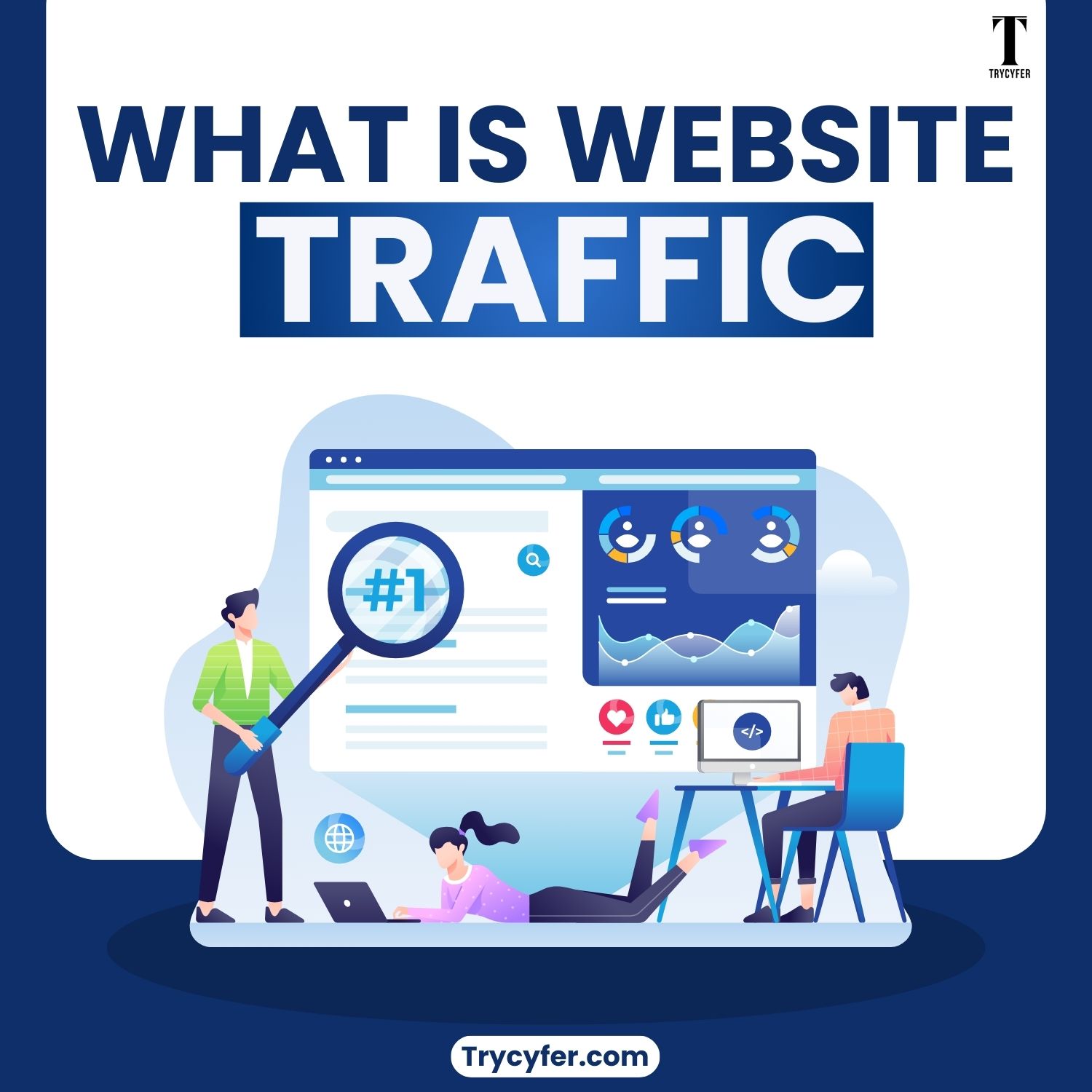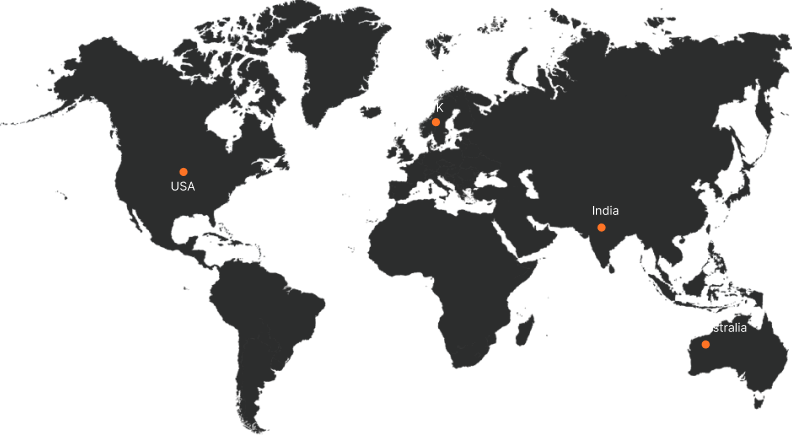What is Website Traffic?

Website traffic refers to the number of users visiting a website and the interactions they perform within the site. It is a key metric that measures the performance of a website and provides insight into user behavior, engagement, and overall popularity. Website traffic can come from various sources, including search engines, social media, email marketing, direct visits, and more. In this blog, we’ll explore different types of website traffic, why it matters, how to track and analyze it, and strategies to increase website traffic.
Types of Website Traffic
Website traffic is generally categorized based on how users find and access a website. Each type of traffic is essential; understanding these categories helps businesses effectively target the right audience.
Organic Traffic
Organic traffic, the result of visitors finding your website through search engines, is ‘earned’ through a crucial engine optimization process (SEO). Understanding and implementing SEO effectively is critical to maximizing your organic traffic.
Organic traffic is precious because users finding your website via search engines typically seek specific information, products, or services. Higher organic traffic often leads to better user engagement and conversion rates.
How to Increase Organic Traffic:
- Keyword Optimization: Use high-performing keywords to ensure your content ranks well in search engines.
- Content Marketing: Create valuable, informative content that answers common queries related to your niche.
- On-Page SEO: Optimize your meta tags, headings, and content structure for search engines.
- Backlinks: Build quality backlinks from authoritative sites to improve your search rankings.
Direct Traffic
Direct traffic consists of visitors who land on your website by typing your website URL directly into their browser. This means they know your website and do not need a search engine to find it. Direct traffic can come from users who have bookmarked your site or already know your brand.
Importance of Direct Traffic:
- Brand Recognition: Direct traffic indicates your brand is well-known, and users return to your site.
- Loyal Audience: It often represents a loyal audience that repeatedly visits your website for updates, new content, or purchases.
How to Increase Direct Traffic:
- Brand Awareness Campaigns: Run marketing campaigns to build awareness of your brand.
- Consistent User Engagement: Provide value to returning visitors through regular content updates, offers, or loyalty programs.
- User-Friendly Website: To encourage repeat visits, ensure your website is easy to navigate, fast, and visually appealing.
Referral Traffic
Referral traffic appears when users visit your website by clicking on a link from another website. This type of traffic can come from blog posts, social media, affiliate marketing, forums, or any other form of external linking.
Importance of Referral Traffic:
- Inbound Links: Referral traffic helps boost your domain authority by building high-quality backlinks from external websites.
- New Audience: Referral links introduce your website to a new audience that may not have found you otherwise.
How to Increase Referral Traffic:
- Guest Blogging: Contribute articles to reputable blogs in your niche and include links back to your website.
- Influencer Marketing: Partner with influencers who can share your content or products with their audience.
- Social Media Sharing: Encourage users to share your content on social media platforms.
- Affiliate Marketing: Build an affiliate network where partners can refer traffic to your site for a commission.
Social Media Traffic
Social media traffic refers to users who find your website through social media platforms such as Facebook, Twitter, Instagram, LinkedIn, or Pinterest. With billions of active users on social media, this is a powerful source of traffic, especially for businesses targeting younger demographics.
Importance of Social Media Traffic:
- Engagement: Social media traffic is highly engaging, as users are likelier to interact with content, share posts, and participate in conversations.
- Brand Exposure: It helps increase brand visibility and reach, especially when content goes viral.
With their potential to lead to high conversion rates, social media platforms are a boon for online businesses selling products or services. This is a key advantage for online businesses.
How to Increase Social Media Traffic:
- Regular Posting: Stay active on social media by regularly posting engaging content, offers, and updates.
- Targeted Ads: Use social media advertising to target specific audiences and drive them to your website.
- Influencer Collaboration: Collaborate with influencers who can promote your content or products to their followers.
- Engagement: Interact with followers by responding to comments and encouraging shares.
Paid Traffic
Paid traffic refers to visitors who visit your website through paid advertisements, like Google Ads, Facebook Ads, Instagram Ads, or display ads on other websites. Paid traffic campaigns are designed to drive immediate results and target specific demographics.
Importance of Paid Traffic:
- Immediate Results: Paid ads can generate traffic much faster than organic methods.
- Targeted Audience: You can specify your target audience based on their location, age, interests, etc.
- Conversion-Oriented: Paid ads are often conversion-oriented, designed to lead users directly to product pages, sign-up forms, or other conversion points.
How to Increase Paid Traffic:
- Pay-Per-Click (PPC) Campaigns: Set up Google Ads or Bing Ads campaigns to target keywords related to your business.
- Social Media Advertising: Run paid ads on social media platforms to drive traffic to your website.
- Display Ads: Use banners or display ads on relevant websites to reach more audiences.
Why Website Traffic Matters
Website traffic is a fundamental metric for evaluating a site’s overall performance. Understanding how users find, navigate, and engage with your content is crucial for making informed business decisions. Here’s why website traffic is so important:
- Increases Brand Awareness
The more traffic your website receives, the more visibility your brand gains. High website traffic means more users are exposed to your brand, content, and offerings.
- Measures Marketing Success
Traffic analytics help businesses determine the effectiveness of their marketing campaigns. Tracking traffic sources lets you decide which channels (SEO, social media, paid ads, etc.) drive the most visitors.
- Higher Revenue Potential
More traffic usually means more sales for businesses selling products or services online. Whether you run an e-commerce store, SaaS product, or ad-based website, increasing traffic directly impacts revenue generation.
- Improved Search Engine Rankings
Search engines consider website traffic and other factors when ranking sites. Websites with high traffic are seen as authoritative and credible, which can lead to better rankings in search results, further boosting organic traffic.
- Engagement and Feedback
Traffic is not just about numbers; it’s also about engagement. A high level of interaction, such as comments, shares, or purchases, shows that your website meets user needs. Additionally, traffic data can help you gather valuable feedback to improve your site’s design, functionality, and content.
Read Also: How to Find Bugs in Website
Tools to Measure Website Traffic

Tracking website traffic is essential for understanding user behaviour and improving online presence. Various tools are available to help businesses monitor traffic, analyze trends, and optimize their websites for better performance.
Google Analytics
Google Analytics is one of the best tools for measuring website traffic. It provides detailed insights into where your visitors come from, what devices they use, how long they stay on your site, and what actions they perform.
Key Features:
- Real-time Traffic Monitoring: Track live visitor activity and traffic sources.
- Behaviour Analysis: Understand user behaviour, including page views, bounce rates, and session duration.
- Traffic Sources: Break down traffic by source, such as organic, referral, social, or direct.
SEMrush
SEMrush is a powerful tool for tracking traffic and monitoring SEO performance. It offers competitive analysis, keyword research, and traffic analytics to help businesses upgrade their search engine rankings.
Key Features:
- Traffic Overview: Get an overview of organic and paid traffic.
- SEO Insights: Monitor keyword performance and identify areas for improvement.
- Competitor Analysis: Compare your traffic with competitors to find growth opportunities.
Ahrefs
Ahrefs is a comprehensive tool for tracking backlinks, organic traffic, and keyword performance. It provides data on traffic trends and helps businesses identify SEO opportunities to improve rankings.
Key Features:
- Traffic Analytics: View detailed traffic data, including organic search volume and referral sources.
- Backlink Monitoring: Track backlinks and assess their impact on your website’s traffic.
- Content Explorer: Find high-performing content ideas to drive more traffic.
Moz
Moz offers tools for tracking website traffic, search engine rankings, and link-building opportunities. It provides insights into both organic traffic and SEO performance.
Key Features:
- Traffic Tracking: Measure organic and direct traffic over time.
- Keyword Rankings: Keep a check on how your website ranks for specific keywords in search engines.
- SEO Suggestions: Receive tips on how to improve traffic through SEO.
Related Blog: How a Website Works?
Strategies to Increase Website Traffic
Generating traffic to your website requires a combination of strategies, from SEO and content marketing to social media and paid advertising. Here are some proven methods to increase website traffic:
- Optimize for SEO
SEO is one of the most effective ways to increase organic traffic. Focus on upgrading your website for search engines by researching high-performing keywords, building backlinks, and improving your site’s structure and speed.
- Create High-Quality Content
Content marketing plays an important role in driving traffic. Publish blog posts, videos, infographics, and other valuable content that answers questions or solves problems for your target audience.
- Use Social Media
Promote your content on social media platforms to drive traffic from different channels. Share posts regularly, run social media ads, and engage with followers to build a community around your brand.
- Run Paid Ads
If you’re looking for immediate results, invest in paid advertising. Google Ads, Facebook Ads, and Instagram Ads are excellent platforms to drive targeted traffic to your website.
- Improve User Experience
A well-designed website encourages users to stay longer, browse more pages, and return in the future. Ensure your site is easy to navigate, loads quickly, and provides a seamless mobile experience.
Conclusion
Understanding website traffic is necessary for any business looking to grow its online presence. Analyzing traffic data and utilizing the right strategies can attract more visitors, improve user engagement, and ultimately increase your revenue. Monitoring and optimizing website traffic should be ongoing, as it helps businesses stay competitive in an ever-evolving digital landscape.
At Trycyfer Technologies, we specialize in helping businesses increase their website traffic through expert SEO services, web development, and content marketing strategies. Trycyfer can help your website attract more visitors, improve your search rankings, and grow your online presence. Let us guide you in building a robust website that drives consistent, high-quality traffic for your business.











